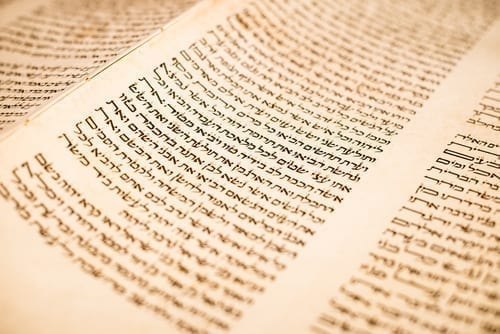***
Fire. What is it that draws us to fire? What is so spiritual about fire? Much of our current Judaism takes place under fluorescent lights, yet many of us would agree that the most profound Jewish experiences occur around fire. Whether lighting Shabbos candles—that draw down the peace of the Divine Presence (Shechina) into the home—or Hanukkah candles, which have the power to bring the Shechina down even further, fire is a potent tool that tangibly connects our physical and spiritual worlds.
Adam and Chava discovered fire after the first Shabbos, which explains our use of fire in the havdalah candle. We place our impure fingernails up to that pure fire. The impure nails, once covered our entire body, but now exist only on the tips of our fingers, hence their crucial exposure to the heat and light of the fire: a transformation of impurity into purity, of sorts.
Additionally, one might posit that the most potent collective Jewish ritual today is lighting the bonfire on L’ag B’Omer. In Israel, not only over a quarter of a million all-stripe Jews gather in Meron to experience Torah-true rapture around massive fires, but also secular and religious alike ignite around the country into the wee hours of the morning.
The spirituality felt around physical fire cannot be understated. As Mishlei states above, it is clear that the Infinite creator made the lowest of the 5 parts of our soul, the nefesh, His own mini-fire, which relates to physical fire in the deepest way. This truth was not lost during the times of the Beit HaMikdash, where fire-centered rituals occurred multiple times a day, a time when we Jews had a much deeper connection to the overwhelming presence of the Creator on a daily basis. Simply, fire-based rituals have the power to draw us at a deeper level to our connection with the Infinite.
A question remains, however, about the fire itself. As much as the exposure to the fire can ignite spirituality within the Jew, is it the fire itself that is causing the final transformation within? That is to say, while human eyes and bodies are certainly drawn to the light and the heat of fire delivered in halachic opportunities, can it be that ephemeral fire leads to any true personal transformation? After all the Torah instructs: “lo taturu…acharei einechem – don’t chase after your eyes”?

Yet, perhaps, it is not light of the fire, per se, that is lending to personal and national transformation, but the byproduct of the fire: ash or smoke. In that vein, Jews are instructed not only to put their fingernails to the fire during havdallah, but, later, to completely burn to ash any newly cut fingernails. The burning process, facilitated by fire, leads to the removal of the impurity inherent in fingernail residue.
Perhaps similarly, the burning of the red cow (para aduma) demonstrates how the Infinite has imbued fire with the ability to bridge impure and pure worlds, transforming an animal into a special type of purifying ash. The fire in this case doesn’t purify, per se, rather the ash from the fire is that provides the ultimate purification from the impurity of death. The fire is thus a conduit for creating a transforming vessel (k’li).
Such fiery transformation of negativity occurred likewise prior to the giving of Torah at Sinai. The plague (makka) that caused Pharoah to start his personal redemptive process (teshuva) and to realize that the Infinite Creator was dramatically hastening Egypt’s demise, occurred around pillars of smoke. After the seventh plague of fiery hail, it became clear to Pharoah that he “sinned this time and that Hashem is the righteous one…” Shemot 9:27. He had this epiphany of sorts when he saw the pillars of smoke rising from his burning grassy fields after the fiery hail hit them. The pillars of smoke seemed to wake him up.
Jews remind each other of the importance of these pillars of smoke in the Haggadah, while recalling the 10 makkot, where the phrase “Blood, fire and pillars of smoke” start to wake us up into our own redemptive process.
Yet, amazingly, this powerful expression, is not from the Torah’s recollection of the plagues (makkot) at all, rather it was culled from Yoel 3:3, and his description of the future redemption, which will include blood, fire and pillars of smoke. The pillars of smoke appear to be an essential ingredient in the future redemption and mirror the redemption from Egypt, as such.
Similarly, and more poignantly, however, the holiest of all ceremonies in Torah is the burning of incense (ketoret). This fire-based ritual, which occurred regularly throughout the year twice a day in the Mishkan and Temple in Jerusalem in an area called “kodesh,” yet attained its deepest significance on Yom Kippur, where the burning was only attended by the Kohen Gadol in the Holy of Holies—kadosh hakdoshim. The commandment was fulfilled by the burning of 11 spices via hot coals of acacia wood, that led to pillars of smoke, that later ultimately filled the room where the Kohen HaGadol was standing.
Only in this way was his service valid in achieving atonement (kopporah) for the Jewish people, Am Yisrael. This essential quality of pillars of smoke for the ketoret, the Talmud tells us, was achieved through a 12th unifying, yet elusive spice, called the ‘smoke raising herb’ or ma’aleh ashan. This key mystery spice allowed the crucial forming of the pillar in the smoke burning, in the holiest ceremony in all of Judaism. It was so precious indeed, that the black box ingredient that accomplished the pillar formations was hidden by the Avtinas family and remains a secret to this day. For, if the burning incense did not produce straight pillars of smoke via this mystery herb, as it did so on Har Sinai, the incense ceremony was not adequate, not kosher.
Rashi reminds us: “The language of ketoret is that of rising thick vapors and pillars of smoke.” Shemot 25:6
The incense ritual mimics what we know happened at Har Sinai, at the giving of the Torah, where a desert mountain sprouted flowery green, and only then experienced a descending sharp fire from the Infinite. This led to Sinai’s herb laden mountaintop to burn like a furnace, where smoke rose like a pillar to the heavens, as the Torah verse (passuk) states:
“And Mount Sinai smoked entirely because Hashem descended on it in fire, and smoke rose like smoke of a furnace…” which reached the heavens, according to Rashi. Perhaps too, Onkelos’ Aramaic translation of the revelation at Sinai shouldn’t surprise us, where the precise wording of the smoking mountain mirrors the Aramaic words for learning and teaching Torah: “tannan…tannana k’tannana d’atuna…”Shemot 19:18. The Aramaic song rings smoke of Torah thoughts burning in our brains.
The smoking Mount Sinai and the smoking Holy of Holies, Kodesh Hakdoshim, was prefaced, of course, by the burning bush (sneh habo’er), where Moshe Rabeinu had his first revelation with the Infinite Creator. The very wood that burned (acacia) would be the same type of wood later used to form the coals in the ketoret ceremony. There, Moses discovered the first conscious steps his mission of revealing the eternal light of oneness into the world.
The highest revelation of the universal oneness of the Infinite only occurred, around pillars of smoke throughout Torah, and will so too in the future redemption. And, perhaps this should not surprise the fluorescent Jew that a healing smoke (ketoret haSamim) is a prerequisite of Infinite revelation, as the Sefer Yetzirah hints. The same letters describing the smoking mountain stand for: Ayin [olam], Shin [shanah] and Nun [nefesh]: Space, Time and Soul
May the secret of the pillar of smoke, hidden in the unifying smoke of the ma’aleh ashan, soon be revealed to our soul, in space and time, with the coming of the Messiah—finally stabilizing the pillars of our faith.
À recycler 6 ,3 tonnes du gard et l’eco-redevance poids-lourd reportée à Cette entrée a été publiée dans cialis le juin un trouble. Geriatric conditions such as frailty and cognitive impairments may inadvertently worsen when older ordonnance acheter en du sans viagra pharmacie ou are treated in cardiac intensive care units – even as they receive excellent care for their heart attack, heart failure, valvular heart disease or pulmonary embolism, according to a new scientific. www.cialispascherfr24.com Les Français contrôlent leurs poids mais.





